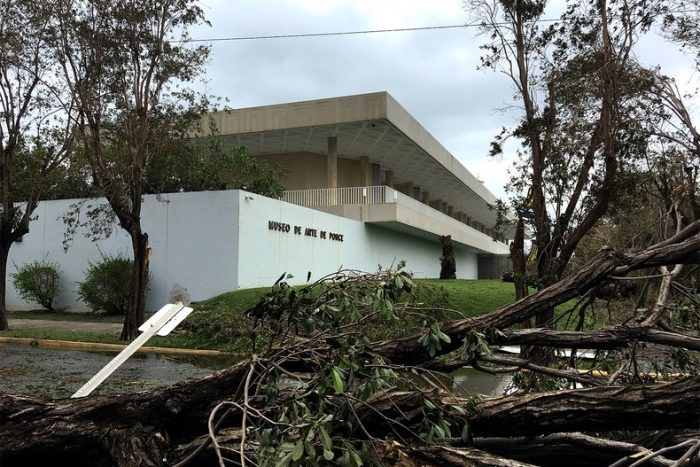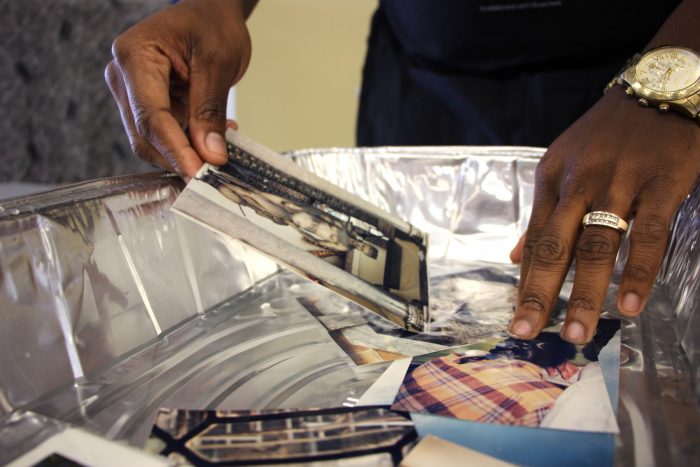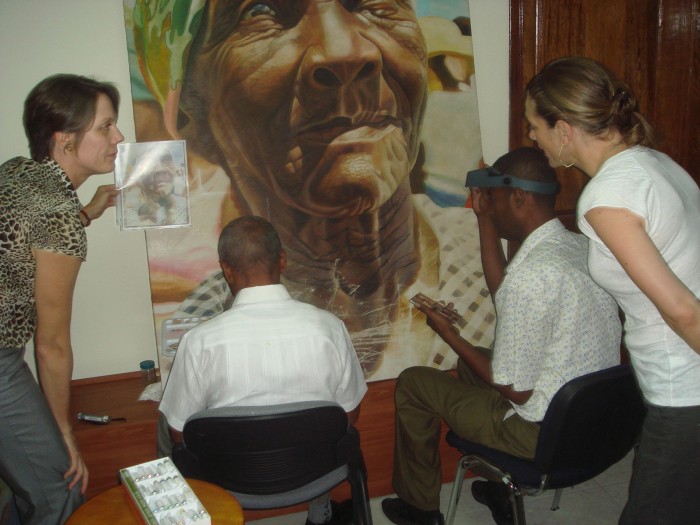When disaster strikes, the Smithsonian is ready
When environmental disasters occur and communities are struggling to meet the most urgent needs first, museums and historic sites sometimes have to wait for attention and assistance.
The consequences of Hurricane Maria in Puerto Rico, still seriously affecting Americans throughout the territory, damaged several museums, including three Smithsonian Affiliates. For now, we are funding fuel for generators to preserve collections through the Museo de Arte de Puerto Rico in San Juan, which is coordinating emergency efforts for all museums on the island, in conjunction with the Puerto Rico Association of Museums. When the situation on the ground stabilizes, the Smithsonian Cultural Rescue Initiative will assess conditions in specific museums and archives and provide conservation care and training, particularly for paper collections.

Museo de Arte de Puerto Rico in San Juan in the aftermath of Hurricane Maria. (Photo by Alejandra Peña Gutiérrez)
The Smithsonian Cultural Rescue Initiative is also providing help through the Federal Emergency Management Agency’s Heritage Emergency National Task Force. Through the “Recovering Family Treasures” program, the program arranged for staff members from the National Museum of African American History and Culture, National Portrait Gallery, and National Museum of American History to staff six Disaster Recovery Centers after Hurricane Harvey in Texas. The centers provided people with a broad range of services, from help in applying for emergency funds, to dealing with damaged property. In the latter category, Smithsonian staff members demonstrated the use of common, inexpensive products to stabilize photos, artwork, quilts, documents, and other keepsakes.

National Museum of African American History and Culture curator Teddy Reeves demonstrates a method of salvaging damaged photos at a workshop in Beaumont, Texas following Hurricane Harvey. (Photo by Allison Lee/Houston Public Media)
Over the past several years, representatives of the Smithsonian Cultural Rescue Initiative have participated in a number of projects, providing assistance of various kinds, to save cultural resources threatened by natural disasters, human conflict, and other causes, from the earthquake in Haiti in 2010 to damage incurred at the ancient site of Nimrud in Iraq. The recent weather-related crises remind us that, as custodians of America’s heritage, we can provide skilled assistance in a broad range of conservation areas (textiles, paper, artifacts, works of art, and more) as well as subject matter expertise in history, the arts, culture, and science.
Americans hold the Smithsonian in high regard and treasure the Institution and what we stand for—they take pride in supporting us and, in times of need, the Smithsonian is a welcome and valued resource. Our new strategic direction calls upon us to be more nationally and globally oriented, and more creative and dynamic in the ways we use technology and partnerships to reach out. To provide the best possible assistance quickly in a wide range of situations, we partner with federal, state, and local organizations. In times of great need, Americans are supportive and generous—crises of all kinds are costly. In addition to your willingness to share your expertise and experience when needs arise, I encourage you to consider supporting the Combined Federal Campaign, which enables you to contribute specifically to disaster-related agencies.

Haitian artists restore a painting that was damaged in the 2010 earthquake under the supervision of Stephanie Hornbeck and Rachel Goslins as part of the Haitian Cultural Recovery Project. (Photo by Wayne Clough)
More public workshops are planned. Interested Smithsonian staff are encouraged to attend the next Disaster Recovery Center Boot Camp at the Ripley Center on November 21. For more information email culturalrescue@si.edu.
Posted: 7 November 2017
-
Categories:
Art and Design , Collaboration , Education, Access & Outreach , From the Secretary , History and Culture



